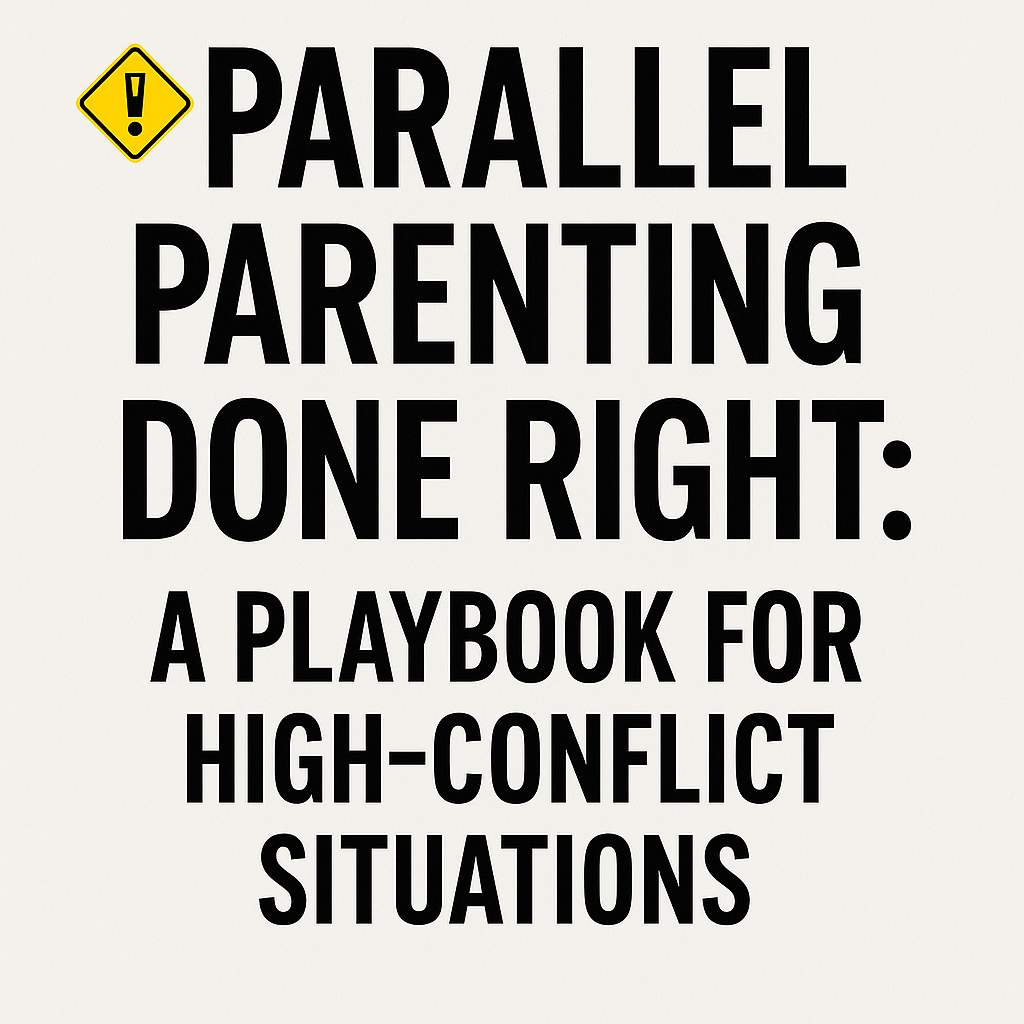
Divorce and separation bring enough stress on their own—but when ongoing conflict between parents doesn’t cool down, it’s the children who often feel the weight of the battle. That’s where parallel parenting steps in. It’s not the warm, fuzzy vision of collaborative co-parenting, but it can be the strongest foundation for families who need peace more than partnership.
Parallel parenting is often misunderstood as “giving up” on communication. In reality, it’s the opposite: it’s creating a framework strong enough to carry a child through the storm without being pulled apart by the winds. Done right, it allows children to maintain meaningful relationships with both parents while reducing the harmful effects of ongoing disputes.
My Story: From Battlefields to Dinner Tables
I’ll be the first to admit—I wasn’t always the poster child for peaceful co-parenting. I have two children, with two different moms, and for a long time those relationships were fueled by conflict. To be blunt: I couldn’t stand either one of my exes, and they couldn’t stand me.
To navigate, I built walls so thick they could have been mistaken for medieval fortifications. Collaboration? Nonexistent. The parenting order became my holy scripture. The only rule that mattered was: stick to the order, no exceptions.
And you know what? It worked. It created enough space that no one could make me miserable. Over time, the fire burned down to embers. Fast-forward to today: I’ve been court-free since 2020. Not only that, but I can now sit in the same room with both of my kids’ moms—and yes, even share a meal at the same table—without the tension of a courtroom echoing in the background.
Parallel parenting gave me the breathing room I needed. It wasn’t easy, and it wasn’t pretty, but it was worth it.
Why Start With Parallel Parenting?
Here’s the thing: in my experience, most strong parenting plans start parallel. Not because anyone dreams of two separate households running on radio silence, but because it’s the safest way to create an order that actually holds up when conflict hits.
It takes just one bad co-parenting day for nuclear holocaust to ensue. One missed pickup, one disagreement about bedtime, one “but you didn’t tell me…”—and suddenly you’re back in court, draining money and energy while your child gets stuck in the middle.
Parallel parenting avoids this. By building the most ironclad plan from the beginning—one that gives each parent autonomy within their own home—you reduce the chance of conflict spiraling out of control. The beauty is, you can always add flexibility later if trust rebuilds. But you can’t retroactively patch a vague, flimsy plan once everything’s already fallen apart.
The Core of Parallel Parenting
Parallel parenting minimizes unnecessary contact between parents and keeps decision-making clean. At its heart:
Clear boundaries: Each parent runs their household without micromanagement.
Independent decision-making: Day-to-day calls belong to the parent on duty.
Ironclad written orders: Every holiday, pickup, and exchange spelled out—no “we’ll figure it out.”
Businesslike communication: Short, direct, often app-based, leaving little room for drama.
Think of it as setting two train tracks side by side. Each parent has control over their own train, but both are headed toward the same destination: a stable, secure childhood.
The Benefits of Starting Parallel
Enforceability: A well-drafted parallel plan leaves little room for interpretation, which makes it easier to enforce if needed.
Conflict protection: Kids aren’t exposed to their parents’ fights, because the structure prevents them.
Stability first, flexibility later: You can add cooperation once the dust settles, instead of trying to salvage chaos.
Less stress for parents: No more negotiating every detail; the order carries the weight.
Misconceptions to Clear Up
“Parallel parenting means failure.” Wrong. It means you were smart enough to prevent disaster before it happened.
“It’s permanent.” Not true. Many families evolve into more cooperative co-parenting as trust rebuilds.
“Kids can’t handle two separate systems.” Actually, kids handle different routines far better than they handle constant conflict. Research shows it’s the fighting, not the difference in rules, that harms them most.
Pro Tip
When drafting a parenting plan, assume you’ll have the worst possible day with your co-parent. If the plan still works even under those conditions, you’ve got a strong one.
Final Word
Parallel parenting isn’t a punishment. It’s insurance. It’s building a structure strong enough to withstand the worst days so that kids can still thrive. If cooperation grows later, wonderful. But even if it doesn’t, your child’s world is still stable, consistent, and secure.
If it worked for me—going from courtroom wars to dinner-table peace—it can work for you.
At Elevatus Coaching, the mission is simple: lighten the load for parents navigating heavy situations. And sometimes, the smartest way to lighten the load is to stop forcing cooperation and start building peace through structure.
